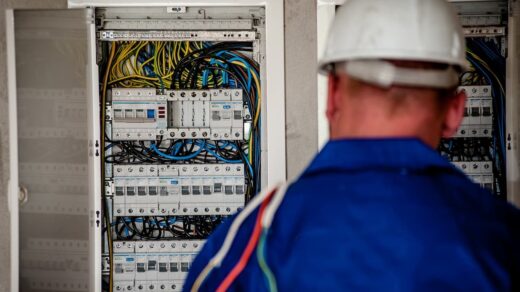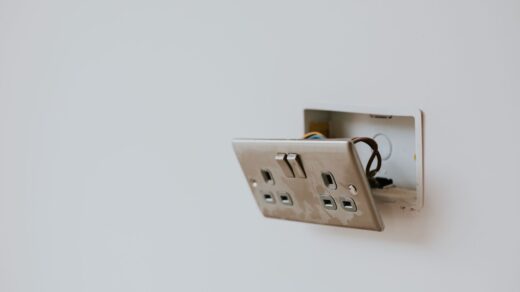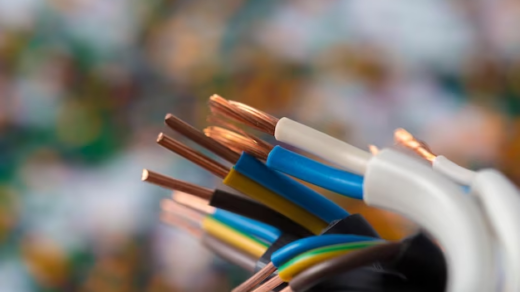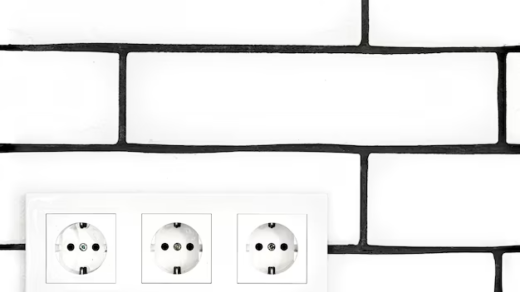In the modern age of electricity, where our lives are intricately intertwined with the constant stream of electrical energy, it becomes of utmost importance to preserve the integrity and functionality of our electrical systems. The presence of overcurrents, which can be triggered by various factors like electrical malfunctions, surges, or even human operational errors, looms as a formidable threat to the stability of these intricate systems. In the realm of electrical engineering, the safeguarding of electrical circuits against potential hazards is paramount. Engineers and experts in the field place their trust in a crucial component of the electrical infrastructure: overcurrent devices and protective systems. This article delves into the world of overcurrent devices and protection, shedding light on their indispensable role in maintaining the integrity and reliability of electrical systems.
Overcurrent Protection Devices
Overcurrent safeguard mechanisms represent indispensable safety elements within electrical systems. They possess a specific purpose: the capability to cease or disconnect an electrical circuit upon detecting an excessive current surge. This surge often arises from occurrences like short circuits, thereby making these protective devices pivotal in averting potential electrical conflagrations and safeguarding equipment from harm.
Key Attributes:
- Automated Disconnection: These mechanisms possess the inherent ability to autonomously trigger and discontinue the circuit’s operation when they discern perilously elevated current levels;
- Principal Varieties: The prevailing overcurrent protection devices primarily encompass circuit breakers and fuses as their principal types;
- Swift Response to Short Circuits: Their principal duty lies in responding to short circuits, which encompass abrupt and unanticipated surges in the current flow.
Recommendations for Users:
- Ensure the precise type and rating of the device align with the specific application to ensure the utmost protective efficacy;
- Regularly inspect and uphold these devices to ascertain their proper functionality is maintained over time.
Overload Protection Devices
Overload protection mechanisms play a crucial role in preserving the integrity of electrical systems when faced with extended periods of excessive electrical currents that surpass the established safe thresholds for equipment, wiring, or devices. However, these currents may not always reach the level required to activate overcurrent protection devices.
Key Features:
- Automated Response: These mechanisms exhibit an inherent ability to automatically react to prolonged instances of heightened current flow, commonly referred to as “overloads.”;
- Unique Attribute: In contrast to overcurrent devices, overload protection mechanisms may not consistently trigger under short-circuit conditions;
- Protective Range: Their primary purpose is to safeguard against overloads, which have the potential to elevate component temperatures and, if left unaddressed, could result in equipment failures or even the outbreak of fires.
Further Clarification:
It is of utmost importance to draw a clear distinction between ‘overcurrent’ and ‘overload.’ While both fuses and circuit breakers possess the capability to interrupt electrical circuits during overload scenarios, they fall under the category of overcurrent devices due to their capacity to handle short-circuit situations. The distinguishing factor hinges on the nature of the “short-circuit” condition.
Guidelines for Safe Implementation:
- Always consult the manufacturer’s specifications and follow their guidelines when choosing and installing overload protection mechanisms;
- Regularly monitor electrical systems for indications of potential overloading, such as dimming illumination or a decline in equipment performance;
- Consider the synergistic deployment of both overcurrent and overload protection mechanisms to ensure a comprehensive approach to electrical system safety.
FUSES: Unveiling the Power Guardians of Your Electrical System
Fuses, those silent sentinels of electrical safety, come in a dazzling array of forms, but their mission remains steadfast: to safeguard your electrical circuits. While you might be most familiar with the small screw-in type known as the Edison base, there’s a world beyond it. Let’s delve into the fascinating realm of fuses, from their interrupting capacities to their diverse types.
1. The Mighty Interrupting Capacity
Fuses are more formidable than you might think. These humble protectors can interrupt currents ranging from a remarkable 10,000 A to an astonishing 300,000 A. Yes, you read that correctly—300,000 A! That’s a testament to their ability to halt electrical mayhem in its tracks. But wait, there’s more to the story.
2. Rated Capacity vs. Interrupting Capacity
Don’t let the numbers confuse you. A fuse has two important ratings: its rated capacity and its interrupting capacity. Understanding the distinction is crucial:
- Rated Capacity: This is the maximum current a fuse will allow a circuit to carry without breaking. For example, a 15A fuse might have a rated capacity of 200,000 A;
- Interrupting Capacity: This is the maximum short-circuit current that a fuse can safely interrupt. While some fuses boast jaw-dropping interrupting capacities, it’s important to note that residential applications rarely encounter fault currents exceeding 10,000 A.
Ever heard of HRC fuses? HRC stands for “high rupture capacity,” and these are the heavyweights in the fuse world. You might stumble upon them in residences, although it’s a rare sighting due to the relatively modest fault currents in homes.
3. CIRCUIT BREAKER: The Modern Protector
Let us now redirect our attention towards circuit breakers, the contemporary sentinels responsible for safeguarding homes against overcurrents. These groundbreaking contrivances garner preference for a multitude of compelling motives:
- Performance Characteristics: Circuit breakers consistently operate within the 10,000 A range, a capability, although not as impressive as some fuses, perfectly suited for protecting household circuits;
- Ensuring Safety: Unlike fuses, circuit breakers provide an enhanced level of security against tampering by homeowners. Rare occurrences of oversized breakers are a seldom-observed rarity.
4. The Breaker’s Hidden Feature
Consider this intriguing fact: circuit breakers are crafted with a single-use intention. What exactly does this signify? To put it simply, following a malfunction, the status of a circuit breaker cannot be assured. Consequently, akin to fuses, when a circuit breaker is triggered due to a fault, it is advisable to procure a replacement. Ensuring safety must forever hold paramount significance when engaging with electrical systems.
Understanding Ground Fault Circuit Interrupters (GFCI) and Their Classes
GFCI Class “A”: Essential Safety in Everyday Electrical Systems
The ground fault circuit interrupter, often abbreviated as GFCI, is a paramount safety device that monitors current flows and promptly detects any deviations to prevent potential hazards.
Key Features of Class “A” GFCI:
- Rapid Response: These interrupters are extremely quick, responding by disconnecting the circuit within 0.0025 seconds when irregularities are detected;
- Sensitive Detection: Class “A” GFCI devices are designed to detect minute differences in current flow. They’ll trip if there’s a discrepancy of as little as 0.005 A between the circuit conductors.
Types of GFCI: Two primary types of Class “A” GFCIs are:
- Receptacle: Directly installed at outlet points;
- Breaker: Integrated within the circuit breaker in the electrical panel.
Regular Maintenance and Inspection:
- Frequency: It is imperative to test these devices at least once a month to ensure their effectiveness.
Testing Procedure:
- Use the ‘test’ button on the GFCI;
- Confirm that the device trips;
- Use the ‘reset’ button to restore functionality.
Safety Precautions:
- Always test GFCIs during property inspections;
- Should the device fail to trip or reset, it poses a significant risk;
- Immediately notify the property owner and include the findings in any related report. A non-functional GFCI requires urgent attention.
GFCI Class “B”: Specialized Protection for Specific Situations
While Class “A” GFCIs are commonly found in households, Class “B” GFCIs serve specialized requirements. These devices trip when there’s a ground fault, specifically of 20 mA or more.

Key Differentiators of Class “B” GFCI:
- Adjustability: Unlike their Class “A” counterparts, Class “B” GFCIs can be adjusted based on specific requirements. This makes them versatile for particular situations;
- Specialized Use Case: As stipulated by the National Electrical Manufacturers’ Standard No. 280, Class “B” GFCIs are mainly used for swimming pool underwater lighting systems that were installed before May 1965.
Recommendations for Use:
- Always ensure the appropriate GFCI class is used for its designated purpose;
- Periodically review standards and regulations to ensure ongoing compliance, especially if modifications or upgrades to electrical systems are planned.
Tips for Ensuring Optimal GFCI Functionality:
- Stay Updated: Understand the differences between Class “A” and Class “B” GFCIs to ensure appropriate usage;
- Routine Checks: Incorporate monthly GFCI checks into regular maintenance routines;
- Professional Guidance: If uncertain about the correct GFCI for a specific application, consult with an electrician or industry expert;
- Safety First: Always prioritize safety. A functional GFCI can be the difference between a minor incident and a significant hazard.
Conclusion
In essence, it is of utmost importance to underscore the critical role played by overcurrent devices and protective measures in electrical systems. These essential components serve as the primary line of defense against electrical abnormalities and are essential in ensuring the reliability and safety of electrical configurations.
Our exploration has delved into the core principles underpinning overcurrent safeguarding, encompassing a diverse array of overcurrent varieties, namely overload and short-circuit currents. Profound comprehension of these overcurrent classifications is imperative when it comes to choosing the suitable protective mechanisms and configuring their trip parameters accurately.








